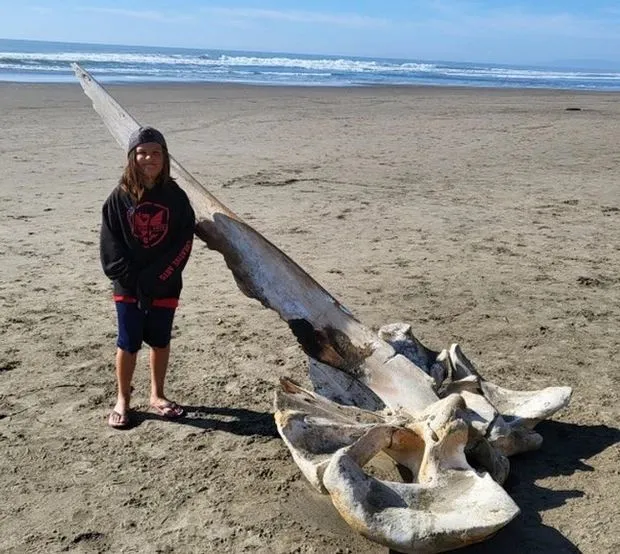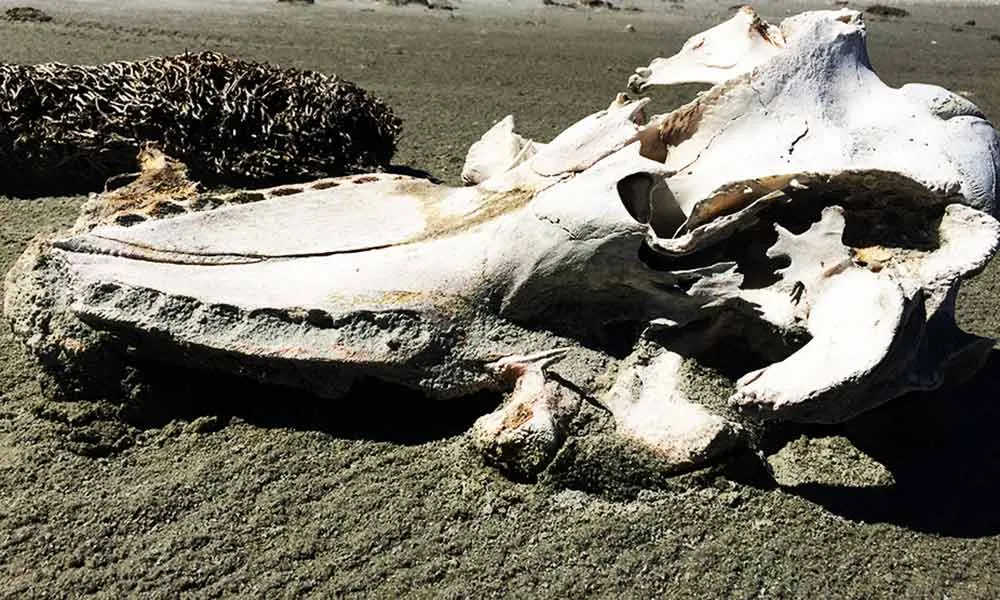Enormous Skull Discovered on the Beaches of San Francisco: A New Chapter in California’s Coastal Mysteries!
Last weekend, when San Francisco photographer Elke Teichmann and her roommate were walking their dogs along the shoreline of Fort Funston, neither of them expected to stumble upon the skeletal remains of a massive sea creature. But according to paleontology experts, that’s exactly what happened.

“My roommate and I were walking our dogs on the beach, looking at all the driftwood that had washed up by the storm, when I saw something that caught my eye,” Teichmann told SFGATE in an email. “From my vantage point, it looked like a large white object peeking out from among all the scattered branches.”
After getting close to the object and taking some photos, he thought it might be part of a whale vertebra. After reviewing the images, Bay Area researchers confirmed that it wasn’t that far off.
“It’s the skull of a modern gray whale, Eschrichtius robustus,” confirmed Robert Boessenecker, a research associate at the University of California, Berkeley’s Museum of Paleontology. Their distinctive, narrow skulls make them easy to identify, and while these whales haven’t been around very long, Boessenecker explained, they have a tumultuous history.

By the late 17th or early 18th century, gray whales living in the western North Atlantic were already extinct. They have lived along the West Coast for the past 1.5 to 2 million years, Boessenecker added, and were nearly driven to extinction there, too, by whalers such as Charles Melville Scammon, an American sea captain who discovered their breeding grounds in Baja California in the mid-19th century. The area is still known as “Scammon’s Lagoon,” according to the independent scientific library Linda Hall Library.
For more than a decade, Scammon continued to hunt these whales along the California coast. Although whaling is now illegal in the United States and has been since the 1970s, the gray whale population is declining and scientists are trying to figure out why.

The eastern North Pacific gray whale population peaked at nearly 27,000 in 2016 but dropped to about 16,000 after an “unusual mortality event,” the National Oceanic and Atmospheric Administration (NOAA) said. Since 2019, more than 300 gray whales have washed up on U.S. beaches, NOAA data shows. Necropsies showed that several of the dead whales showed signs of emaciation, but more investigation is needed, NOAA said.
These mortality events have happened in the past, and NOAA remains optimistic that these massive sea creatures will return. That may mean discoveries like Teichmann’s will remain rare. As he told SFGATE, “I take my dog to Fort Funston frequently, and I’ve never seen anything like this before.”






